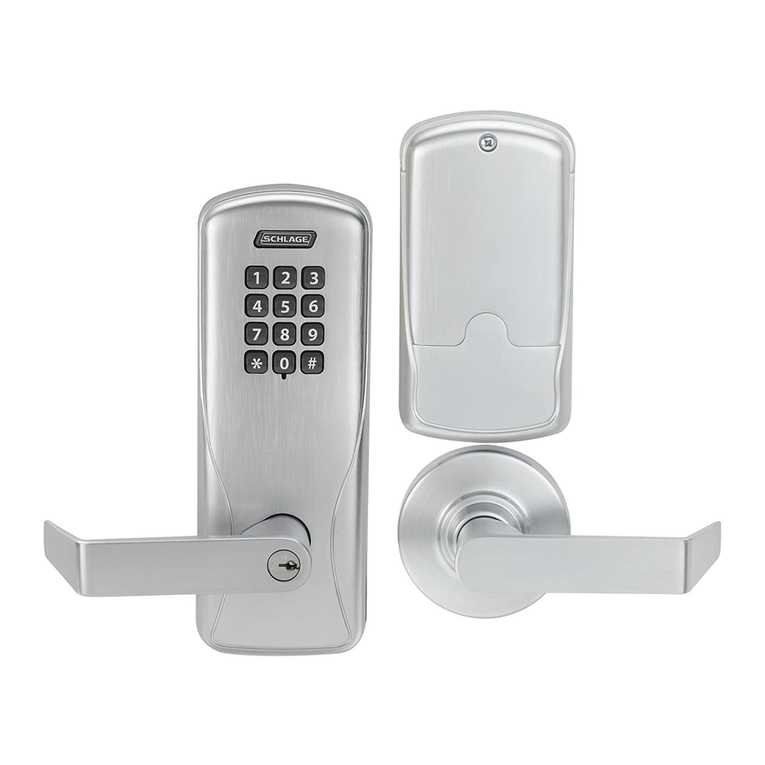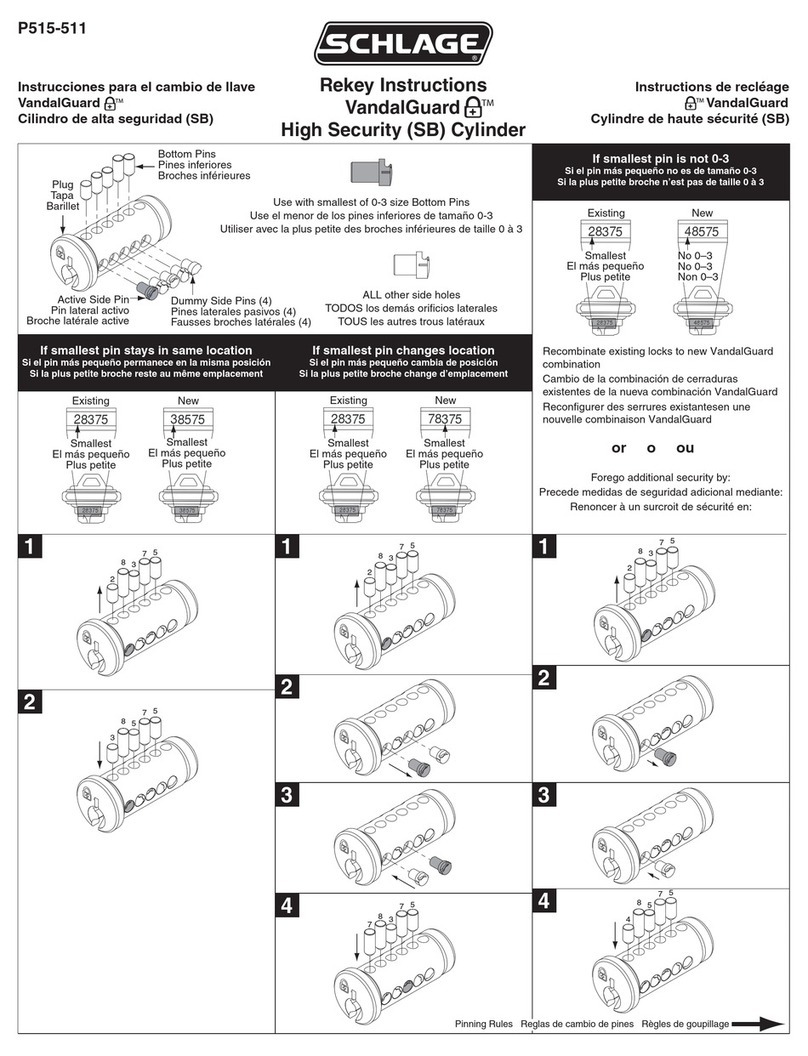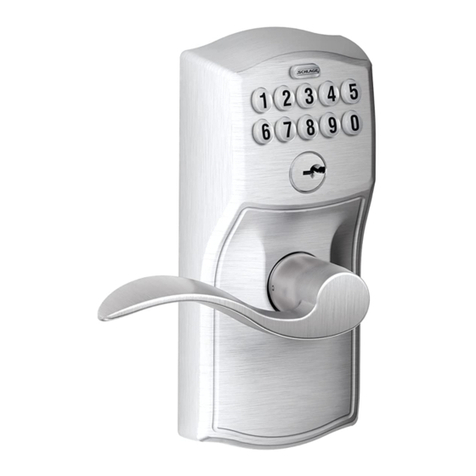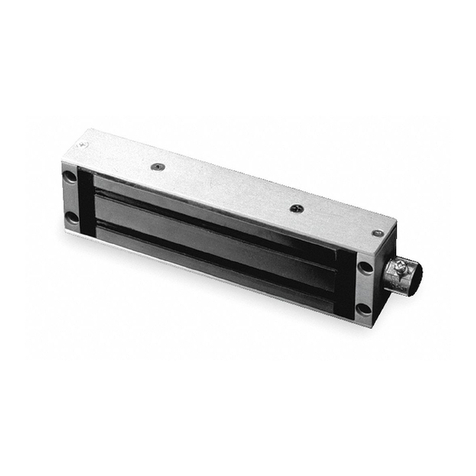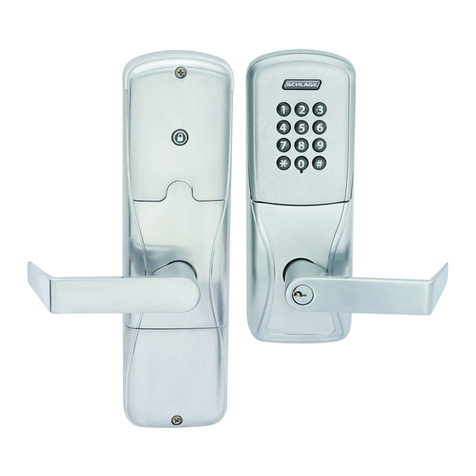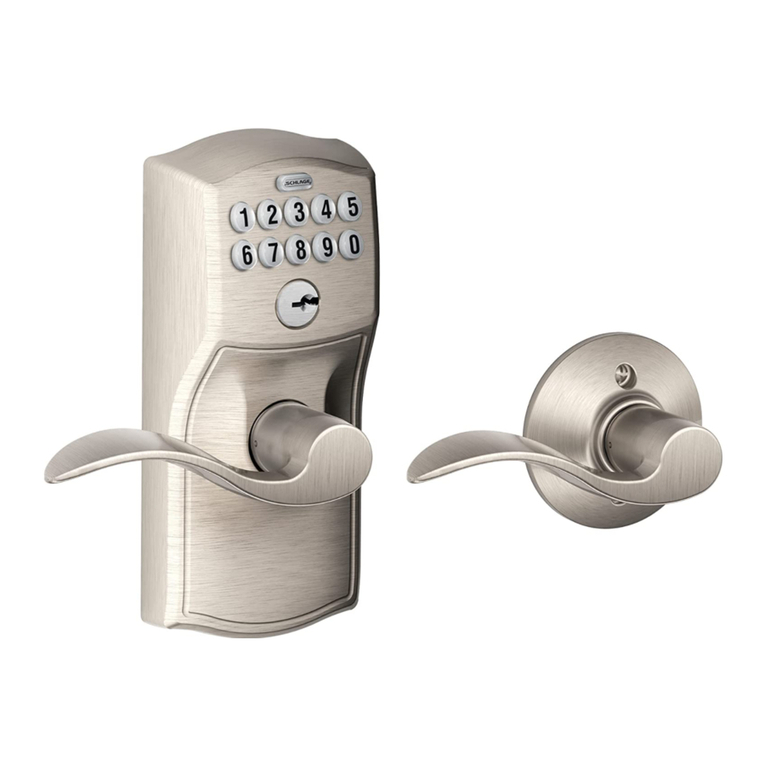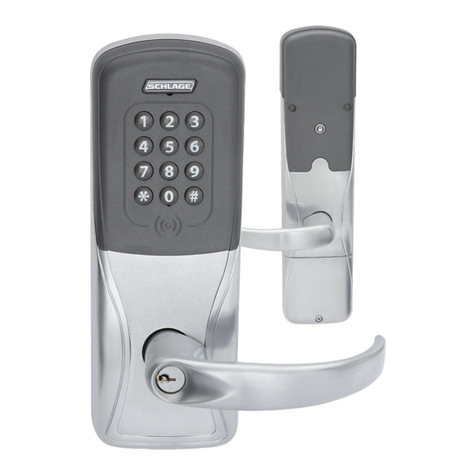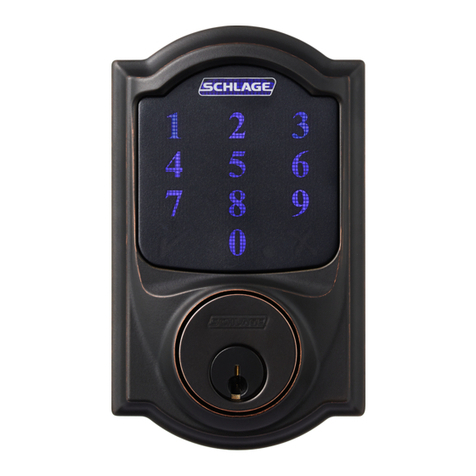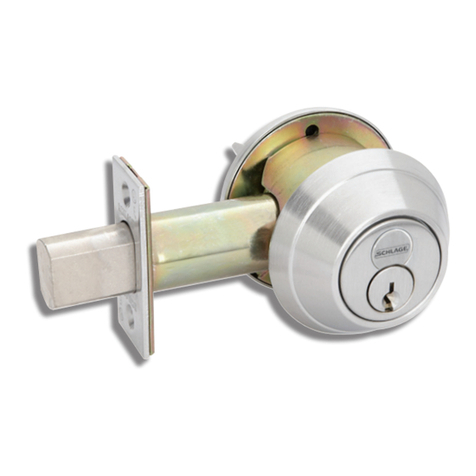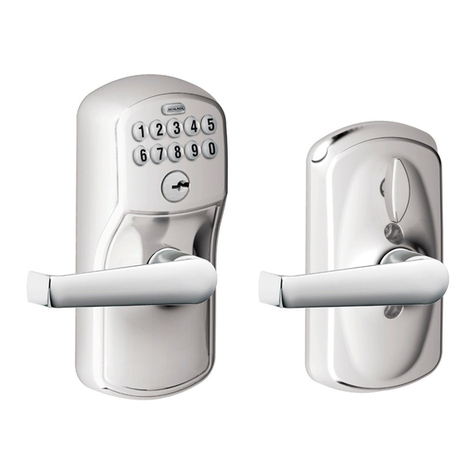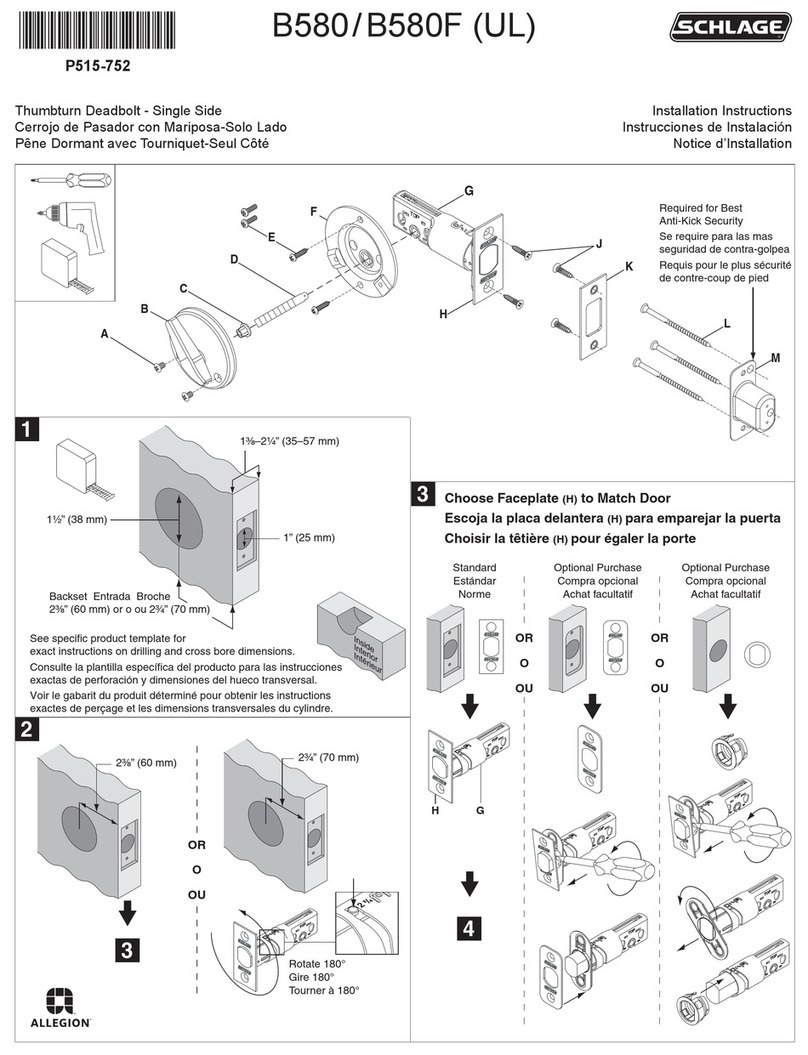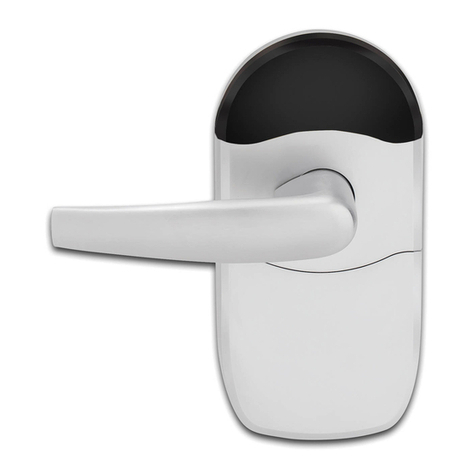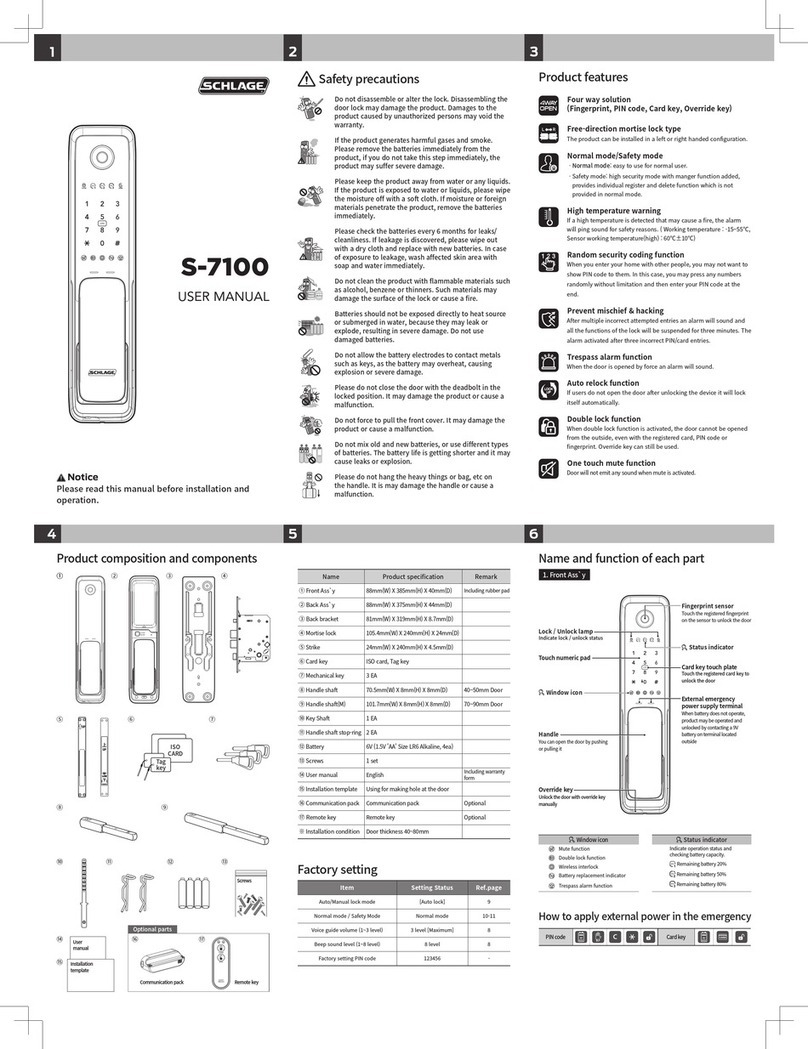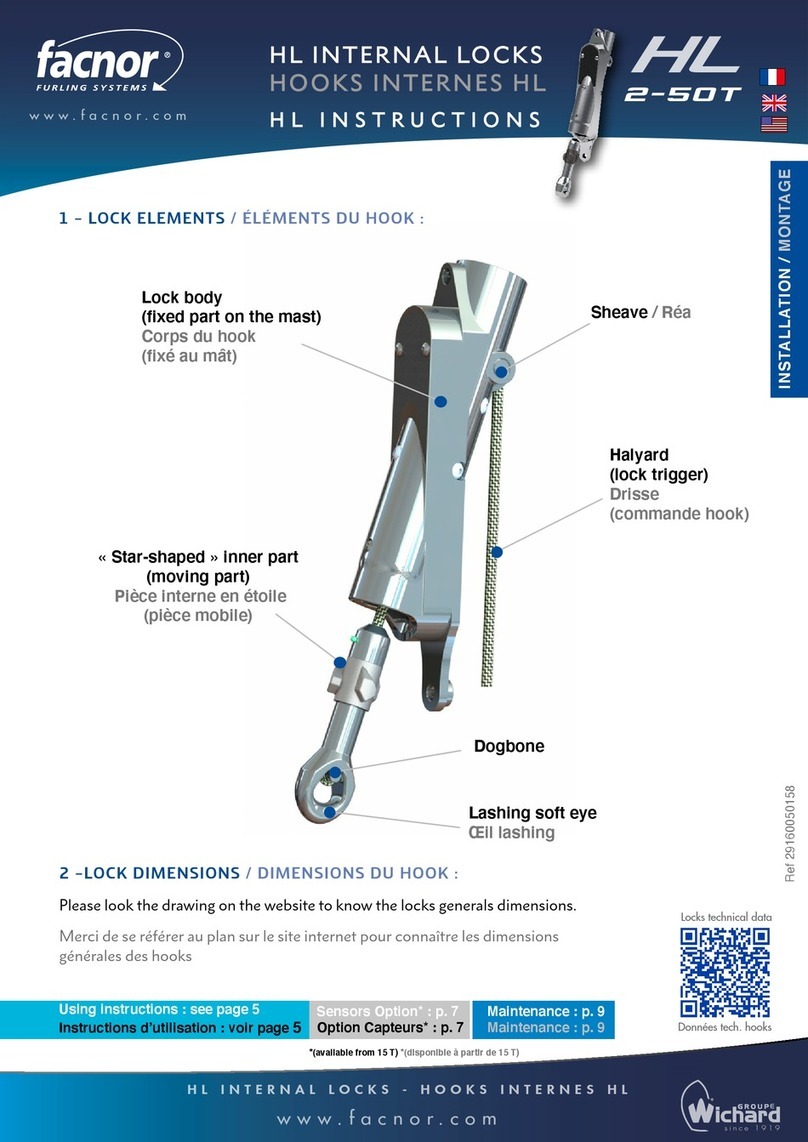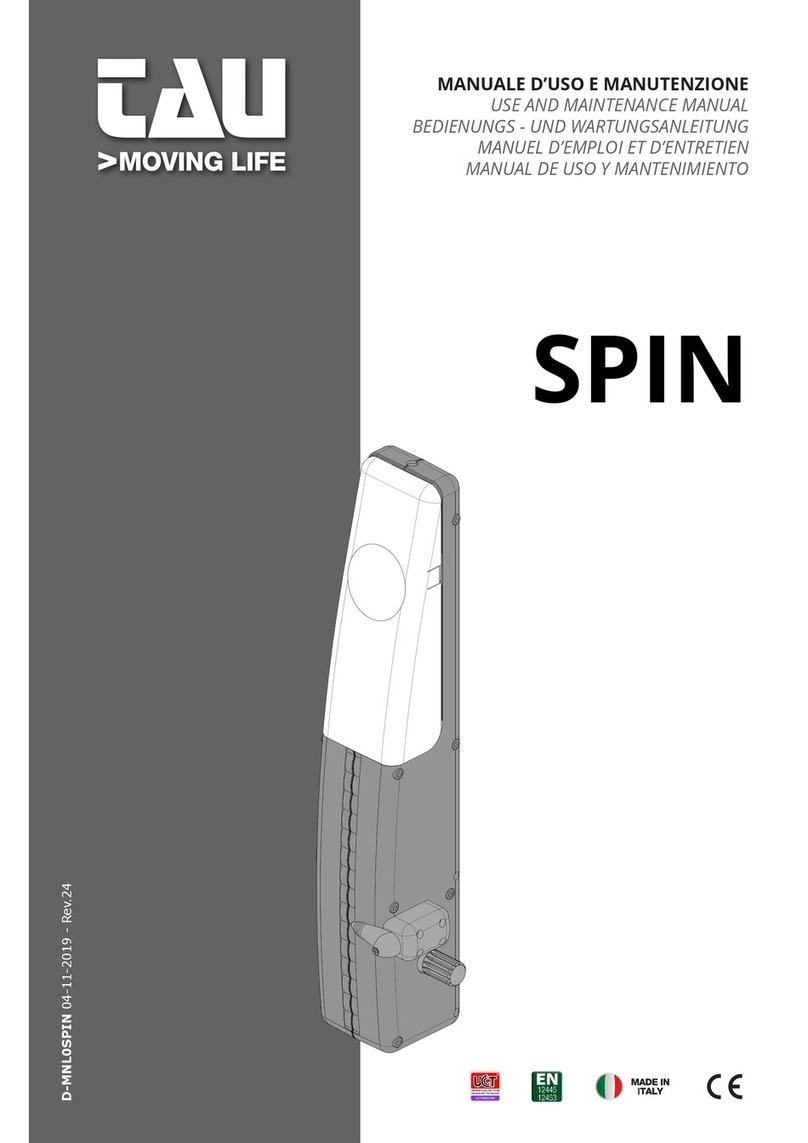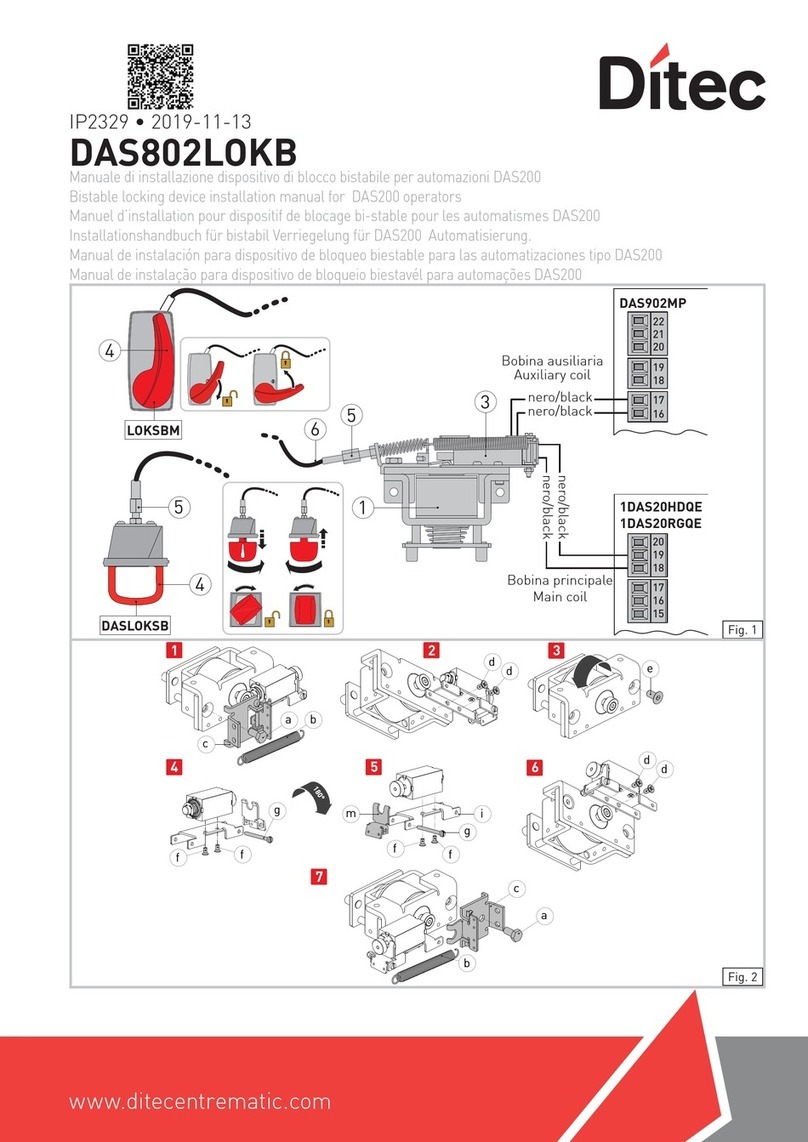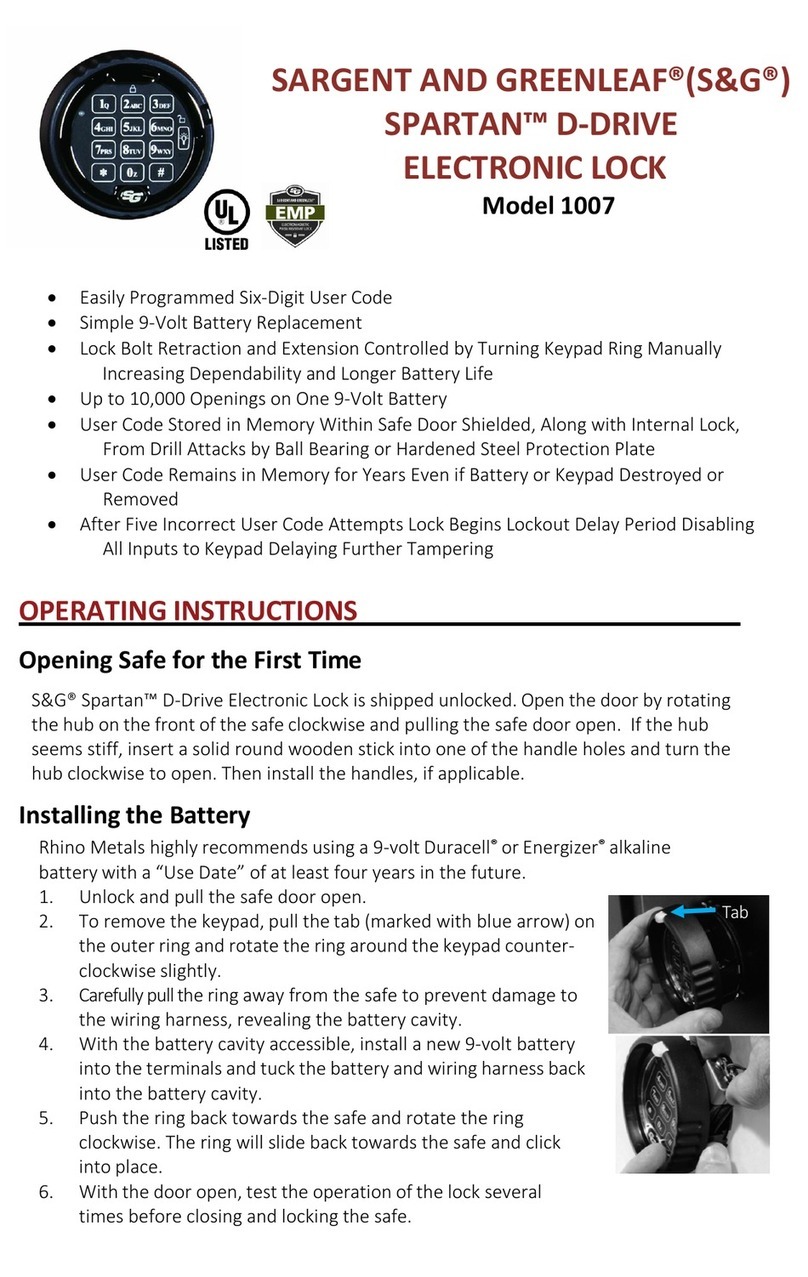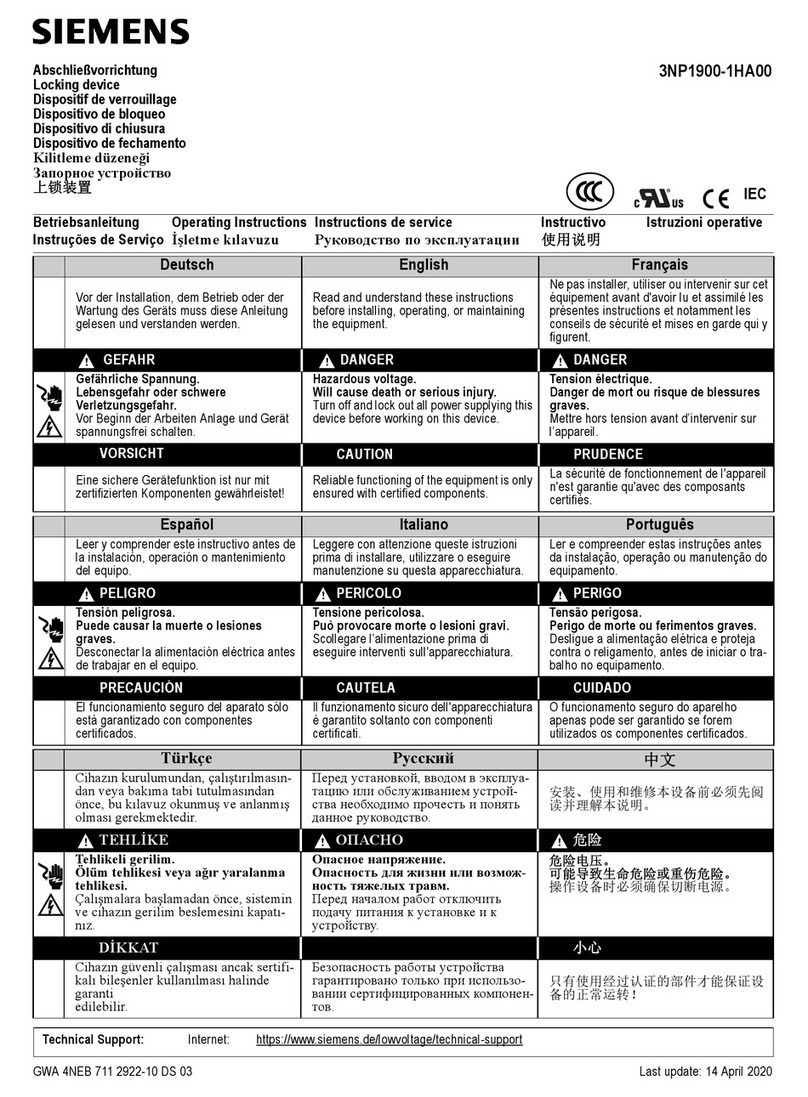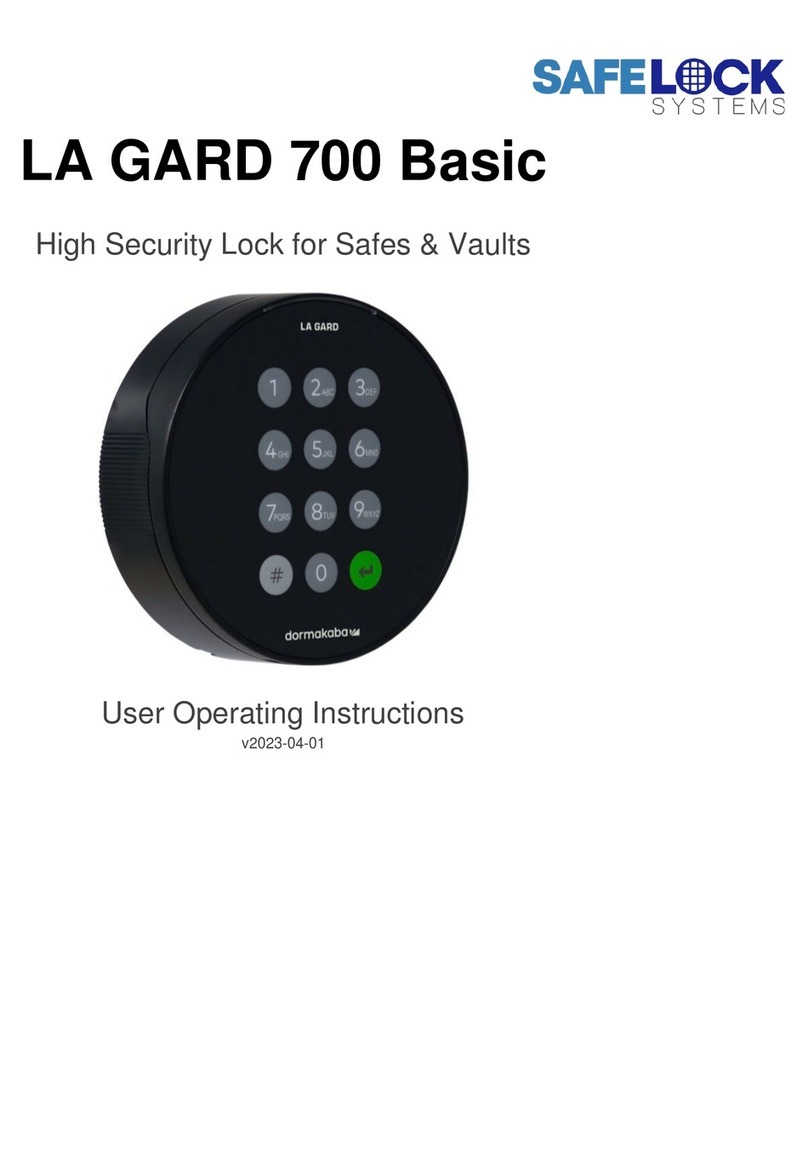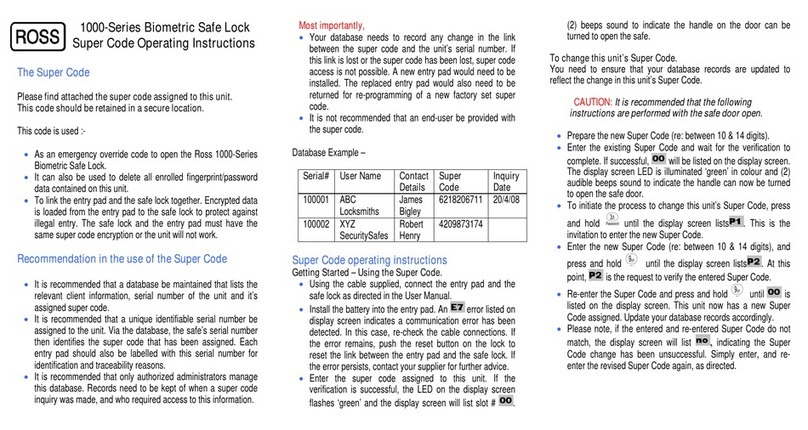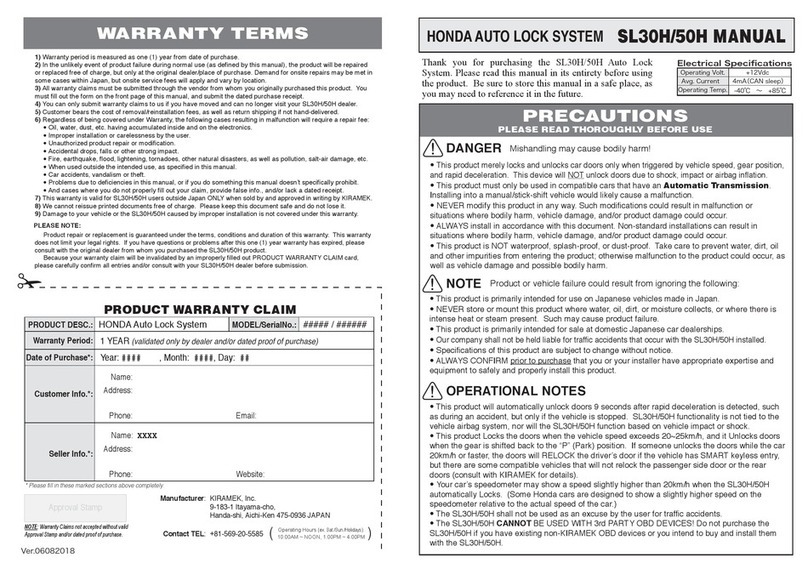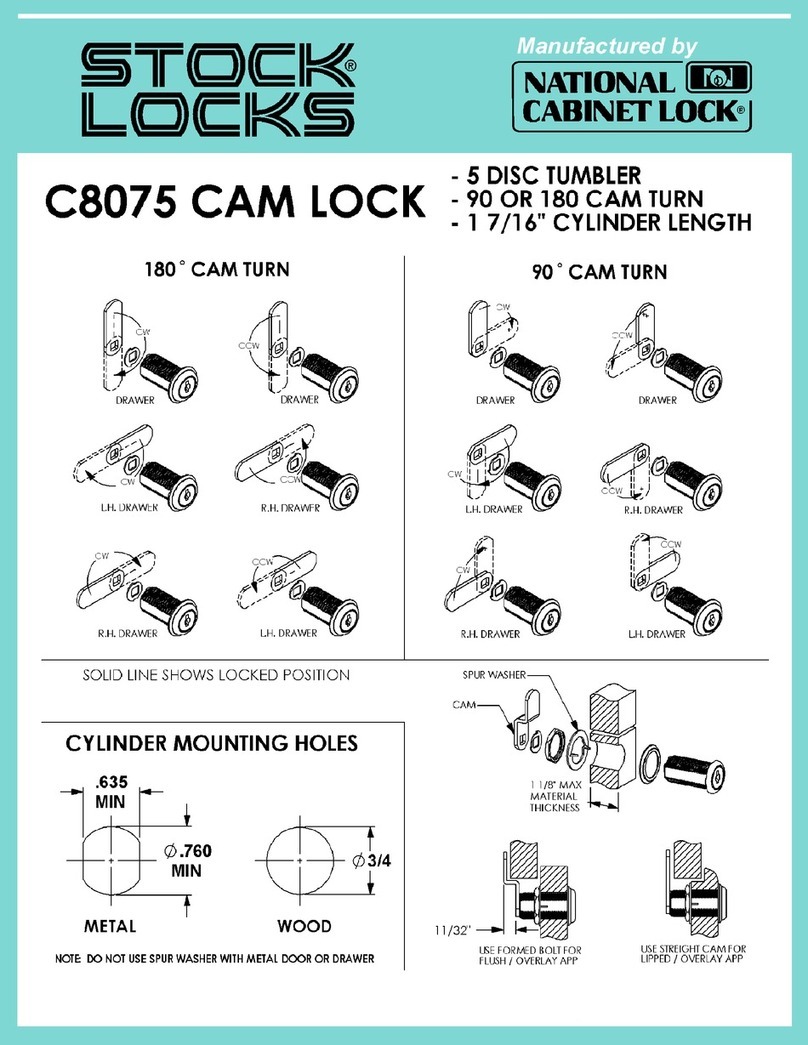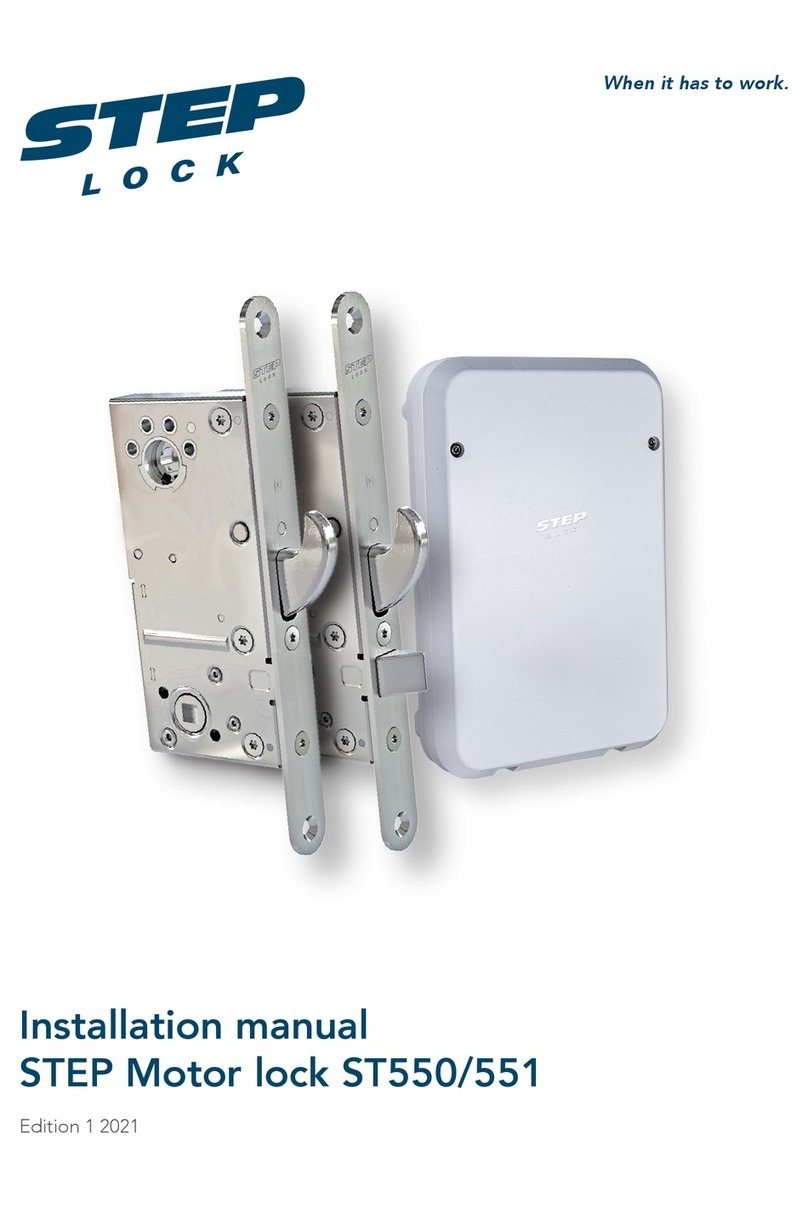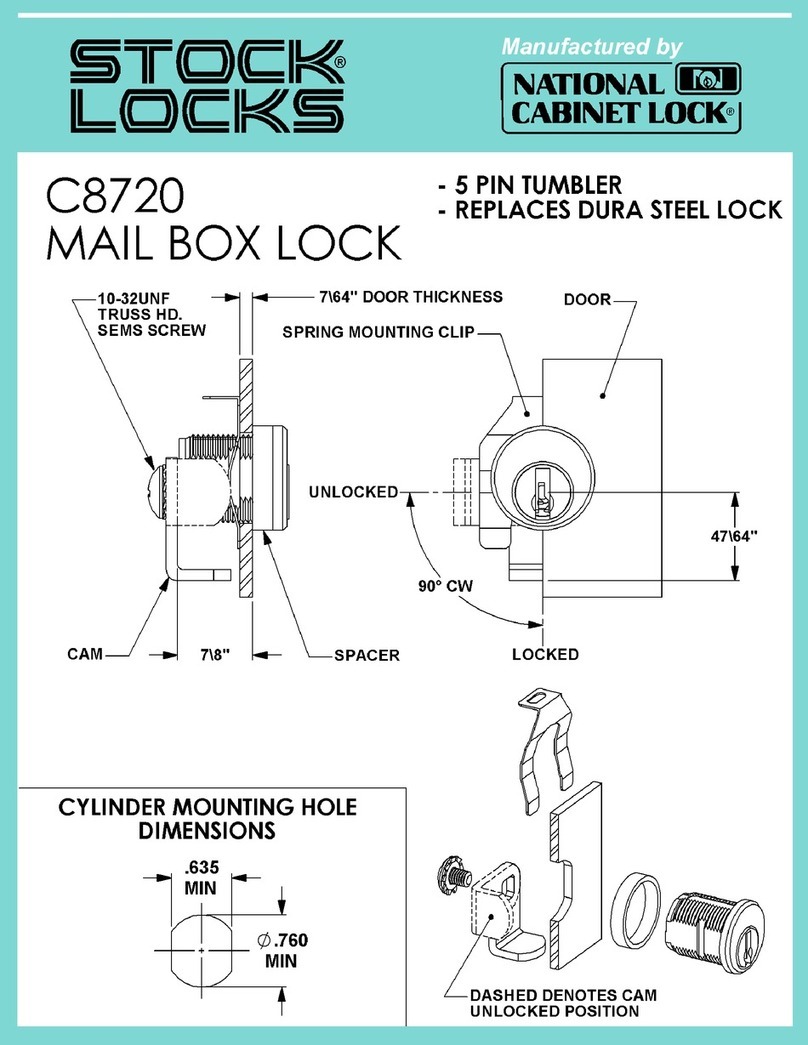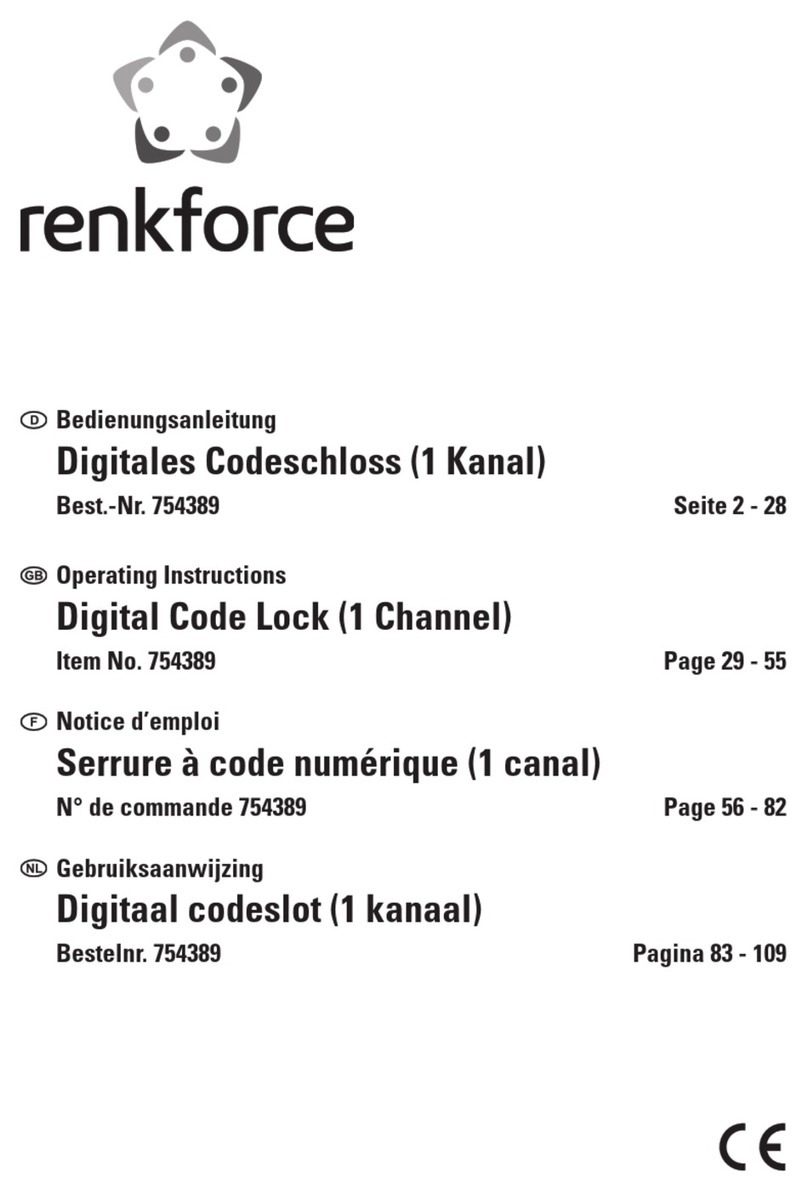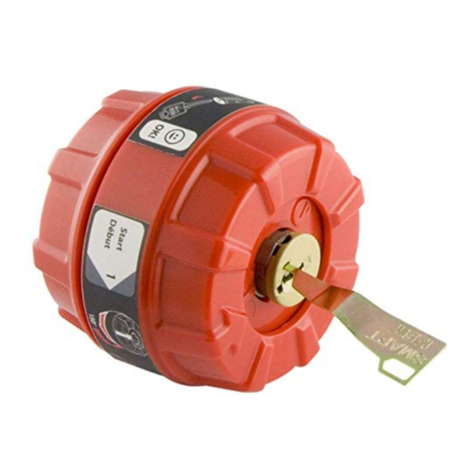15 • Schlage • AD-400 user guide
Problem Possible cause Solution
The reader is not
working.
The Smart card is not
reading.
The magnetic swipe
card is not reading
correctly (no beeps
or blinks).
The through hole ribbon
cable may be pinched.
The Smart card default of
the card reader may not be
correct for the Smart card.
The “Mag Track in Use”
default for all Magnetic
Card Credential Readers
is “Track2”. The magnetic
swipe card data may be on
Track1 or Track3.
Check that the through hole ribbon
cable is not pinched.
Change the Smart card format using
the SUS. Select AD-400/AD-401 “Lock
Properties”, “Reader” tab, and “Smart
cards in use”.
Use the SUS to change “Mag Track
in Use”. Select AD-400/AD-401 “Lock
Properties”, “Reader” tab, and “MAG
Card Track selection”.
Refer to the installation instructions
that came with the AD-400/AD-401
lock, or the SUS user guide for details
on the above mentioned procedures.
FCC/IC statements
The communication module is a 900 MHz transceiver for electronic locks and non-lock devices. The communication
module links the access device to the Access Control Management System, with feedback control to the Access
Device via a wireless means. The module contains the embedded rmware implementing the radio physical and
data layers. There are 5 antennas approved for use with this module:
Approved antenna list:
The required antenna impedance is 50 ohms.
1. PCB trace antenna with a 5.7dBi maximum gain
2. p/n: 23520587, dual beam antenna with a 3.5dBi gain (ANT400-REM-HALL)
3. p/n: 23530579, multi band directional panel antenna with 8.5dBi gain (ANT400-REM-I/O+dB)
4. p/n: 23530553, dual band quasi-omni panel antenna with 4.5dBi gain (ANT400-REM-I/O)
5. p/n: 23520561, multi band omni antenna with 2dBi gain (ANT400-REM-CEILING)
Antennas having a gain greater than the antenna type approved in the list are strictly prohibited for use with this
device. However, antennas of the same type with a gain equal to or less may be used. Examples of this may
include:
• a directional panel antenna with a gain equal to or less than 8.5 dBi may be used with this module
• an omni-directional antenna with a gain equal to or less than 2.0 dBi may be used with this module
Specications of the radio module:
Power output: 18.6 dBm Modulation: BPSK-40 Operating frequency: 906 -924 MHz
Note: The intended use of this module is not for the general public. It is generally for industry/commercial use only.
This transceiver is to be professionally installed in the end product by Allegion, and not by a third party. The Schlage
XPB-COMAD400V2 900 MHz Communication Board Module will not be sold to third parties via retail, general public
or mail order. In the case of a repair, the transceiver will be replaced by a professional Installer.
Federal Communication Commission interference statement
This equipment has been tested and found to comply with the limits for a Class B digital device, pursuant to Part
15 of the FCC Rules. These limits are designed to provide reasonable protection against harmful interference in a
residential installation. This equipment generates uses and can radiate radio frequency energy and, if not installed
and used in accordance with the instructions, may cause harmful interference to radio communication. However,
there is no guarantee that interference will not occur in a particular installation. If this equipment does cause harmful
interference to radio or television reception, which can be determined by turning the equipment off and on, the user
is encouraged to try to correct the interference by one of the following measures:
• Reorient or relocate the receiving antenna.
• Increase the separation between the equipment and receiver.
• Connect the equipment into an outlet on a circuit different from that to which the receiver is connected.
• Consult the dealer or an experienced radio/TV technician for help.
This device complies with Part 15 of the FCC Rules.
Operation is subject to the following two conditions: (1) This device may not cause harmful interference, and
(2) this device must accept any interference received, including interference that may cause undesired operation.

















